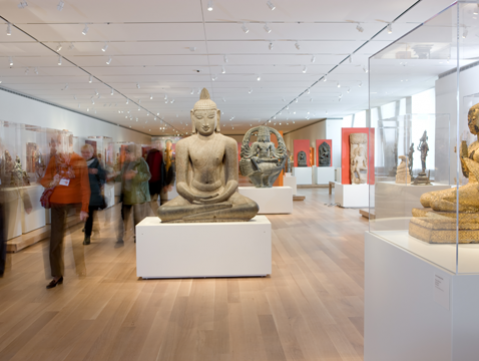
By Tate Glover
For our Marketing Class, Professor Rick Kolsky invited Madhuvanti Ghose, the curator of the Alsdorf Galleries of the Chicago Art Institute. Ghose gave us a brief history of the Alsdorf wing, explaining how the architectural design was intended to make the space primarily into a passage between the new building and the old building.
Ghose was recently given the opportunity to re-install the space, and she took us through the steps and thought process behind the new installation. She explained all of the different factors that go into the process, including considerations for the safety of the artwork and balancing how people flow through the space. She faced the challenge of marrying two very different styles: the more modern feel of the Alsdorf space with the centuries old Indian, Southeast Asian, and Himalayan artwork. As a curator, Ghose aims to tell a narrative in order to draw in museum goers and help educate them on both the culture and artistic style. In order to tell this narrative, including more information about the artwork in the re-installation was crucial.
Ghose also spoke about the difficulties of curating museum permanent collections as they often don’t get as much attention or resources as temporary exhibits. Temporary exhibits are the main draw for frequent customers, and so they need to be exciting enough to draw people into the museum again and again. From a marketing point of view, this presents an interesting problem for museums: you need to maintain a certain level of quality for your permanent collections, however you also need to create exciting temporary exhibits.
We also spoke a bit about customer insights and how the museum doesn’t necessary take into account what museum-goers think about the exhibits when creating them. This exemplifies a question that is at the core of many creative enterprises: Do you forsake some of your artistic vision to better please the masses, or do you forge ahead in order to create the best work you can based on your own opinions? Some argue that you need to forgo your own ideas in order to create a marketable, financially viable product. Others believe that compromising your own artistic vision can destroy the quality of your work. From what I gathered from Ghose’s visit, working within the security of a huge, internationally renowned museum can grant you the stability to create the artistic vision of your choice.
Photo Credits: Alsdof Gallery from the Art Institute of Chicago